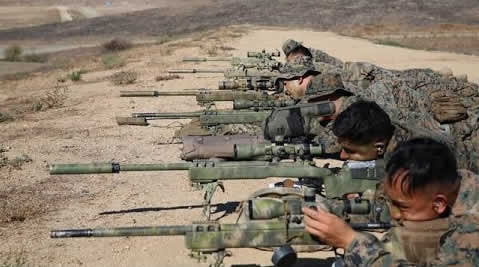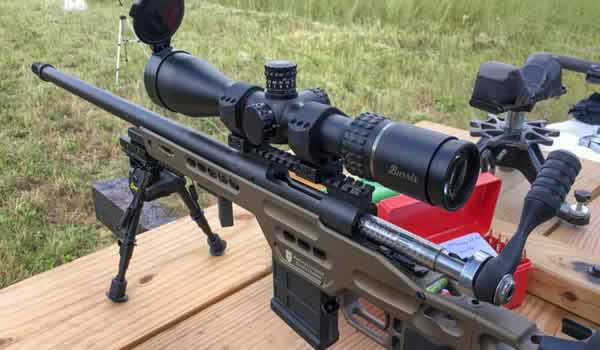
Prairie Dog Hunting
Varmint Control builds Long-Range Shooting Skills
If you’re Looking to Improve your Shooting Abilities, Helping Farmers and others out by Targeting Prairie Dogs fills the Bill.
I frequently find myself dreaming about connecting with spectacularly long
shots. Not like a solid 100-yard kill shot
at a whitetail, mule deer or elk resting at
the fork in a tree, but long, legendary shots
that immediately become the fodder for
modern lore.
Shots like that don’t come very often. Sure, we see videos and hear stories of guys taking down an elk at 700 yards, or a standing shot on a whitetail at 400. Both are fantastic shots, but they’re irregular, rare and not shots we get to practice frequently before that time arises.
Am I right? If we are ethical hunters doing our part, then practice at different ranges under varying conditions is a regular part of our preseason preparation.
When that time comes, however, we pray for one shot and hope it hits true. Shooting at a target, a bucket or a watermelon is nice practice, just no substitute for the real thing.
What if I told you that such shots can be had not only routinely, but free of charge if you’re willing to provide the ammo, pay for gas and take a little bit of initiative by doing the leg work?
What if I said you could add four legs, fur and the thrill of a hunt to your practice? And that your practice would be a valuable public service for ranchers and row-crop farmers alike?
Interested yet? I thought so. Welcome to the wonderful world of prairie dog hunting, where the tag quota is infinity, the shots commonly vary from 10 to 500 (or more) yards, and the only thing limiting your success is your level of enthusiasm and a potential ammo shortage.


MANY YEARS AGO as a high school student in the rich, thick hardwoods of the Midwest, I heard a hunting buddy mention the proposal of varmint hunting out West, with no tag limit and all the shooting we could handle.
Due in part to the restricted visibility at the distance our locale offered, the thought seemed almost too good to be true. We saw glimpses of wildlife all the time, but the range was shorter and the animals were skittish unless you were a farmer on a tractor.
Prairie dogs are an interesting creature. At first glance they are cute and cuddly little critters. For all intents and purposes, if you were to come across a prairie dog town for the first time you might marvel at not only the intricate structures of their tunnels and mounds, but the way the community will vocalize to warn each other of potential danger.
The giant wild hamsters of the plains are an interesting bunch, for sure. Because of speedy reproduction and shrinking habitat, prairie dogs quickly overpopulate and overrun a town so heavily that the grasslands they occupy become no more than a dust bowl, destroying both grazing land for themselves and the cattle, deer, antelope and other livestock they so frequently share territory with. This changes the status of the local prairie dog population from cute and cuddly to destructive pestilence in a hurry.
As with any wild game, hunters are the best and most effective conservationists. When populations are managed by lowering the numbers of colonies, it means fewer mouths to feed, less disease, less impact on other local wildlife species and even a meal for coyotes and many birds of prey.
From an ethics standpoint, we’ve learned in time too that a well-placed shot from a .223 Remington, .204 Ruger and even a .17 HMR (inside of 150 yards) and .22 WMR right between the shoulders of a standing prairie dog proves to be a faster and more ethical dispatch than the landowner trying to manage numbers by using poison, flooding or other means of extermination.

But the actual execution of a plan to hunt prairie dogs can be surprisingly more difficult than the shooter may hope. Their target’s vision is excellent, and although seemingly stupid at first, due to their collective intelligence they become fast learners. Often a “better safe than sorry” approach is adopted and they drop into their tunnels, only occasionally peeking their heads out to scan the terrain for imminent danger.
An educated prairie dog town with skeptical eyes numbering in the hundreds or even thousands can be one of the most difficult quarries many hunters will experience in their predatory days. Which is why the actual art of hunting and stalking and not just walking in as an exterminator can be so valuable.
We’ve learned to employ similar tactics as we do when hunting antelope, mule deer or any other free-ranging game for that matter. Find cover, stay out of sight as much as possible, and choose your shots wisely. Fewer shots mean less noise, which means more time undetected. If your state allows hunting with suppressors, I highly recommend it.
It is also for this reason that we have included in our tactics the habit of setting up a little further away, with better concealment, shooting prone from a bipod or solid shooting rest, or, my personal favorite, using an elevated 360-degree shooting table, as pictured in this article.
Newcomers to the challenge will want to be sure to prepare accordingly based on the country they are hunting in. Take it seriously. Just like any of your big game hunts, you want the most bang for your buck. If you’re hunting the High Plains like we do, that means dry air, hot sun and wind, which in turn translates to potential dehydration, sunburn and dust. The less miserable you are, the more fruitful you’ll be, with better memories too.
Use the appropriate tools. You’ll be spending all day or several hours at the very least looking through the glass on your rifle. Eye fatigue can be a factor even with decent midrange optics. The same goes for range finding gear and spotting scopes. Set yourself up for success and your experience will be more enjoyable from the start.
Finally, make sure your rifle is suit-able for the task at hand. While this is a different type of hunting, it’s still hunting. And we are still responsible to ensure our tools kill quickly and humanely. Will a .30-06 work? Sure, but that’s obnoxious and expensive. Even the .22-250 Remington might be a little overkill, although very effective.
If you can afford it, do it. My longest prairie dog kill to date was taken at 520 yards and the second at 480. Both with a witness and both with a Remington R-15 in .223 propelling 50-grain Hornady V-Max projectiles along at roughly 3,250 feet per second. Your rifle doesn’t have to be custom shop or overpriced for you to be proficient and effective. Just accurate and reliable.
Check out these Cool Gun Safes Click HERE to Check it out.

ANOTHER IMPORTANT FACTOR, as with any method of hunting, is knowing the local laws. Some states allow for the hunter to essentially operate as a “private contractor” for the landowner doing pest removal, which means you can operate as a guest or “employee” (a written contract may be a wise choice in this instance) of the landowner.
Others will require a small game stamp to even pull a trigger in the state, but no specific individual tag for the varmints. Regardless, if there are regulations, know them. If you are terrible at research, ask around or call the state’s conservation department or department of wildlife and they’ll help straighten your path.
Most of all, be creative when it comes to hunting prairie dogs. The odds are that if you can dream it, you can accomplish it. Finding available land can be a daunting task, but possible if you’re willing to be adventurous and even a little brave. Find a town in the boonies overrun with the suckers and walk into the local diner declaring your intentions.
I can almost guarantee someone will know someone who knows someone with an infestation. Churches, coffee shops, bars and legion halls are also great places to begin the process of zeroing in on the varmints.
The trigger time will help you become seasoned, disciplined and confident when the moment comes to punch your tag on the bigger four-legged game. Remember, practice may not mean perfect, but it does mean permanent. So take advantage of the chance to practice conservation, do a landowner a favor, and hone your skills on a formidable opponent.
I absolutely guarantee you’ll giggle and fist-pump the first time you connect at distance. Hunting the four-legged dirt dwellers has become one of my favorite pastimes, as well as one of the most fun to boot. Happy shooting, everyone.
STORY AND PHOTOS BY ERIC “EBBS” EBBINGHAUS



